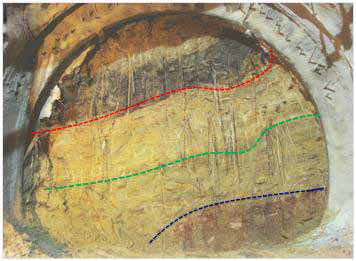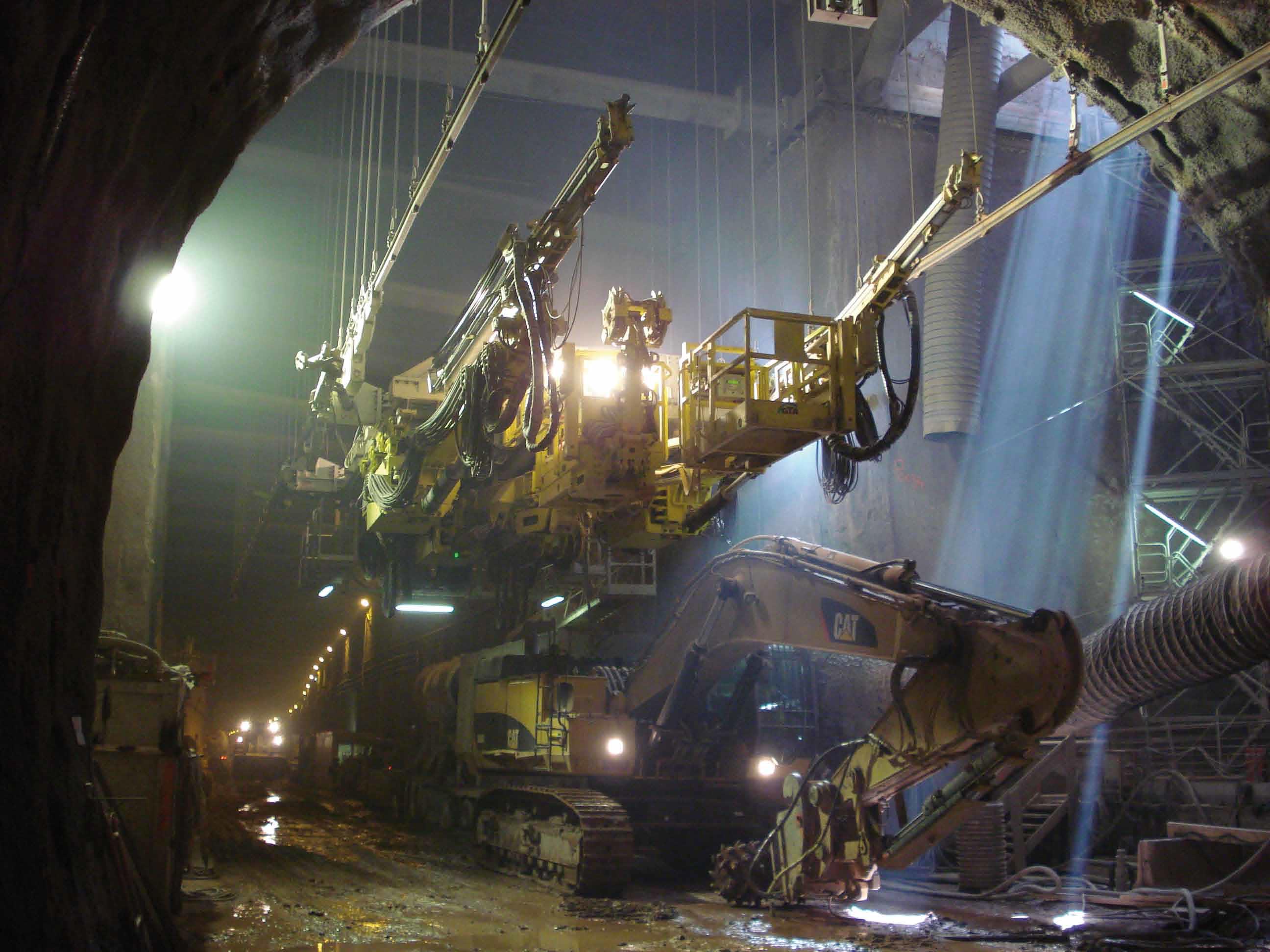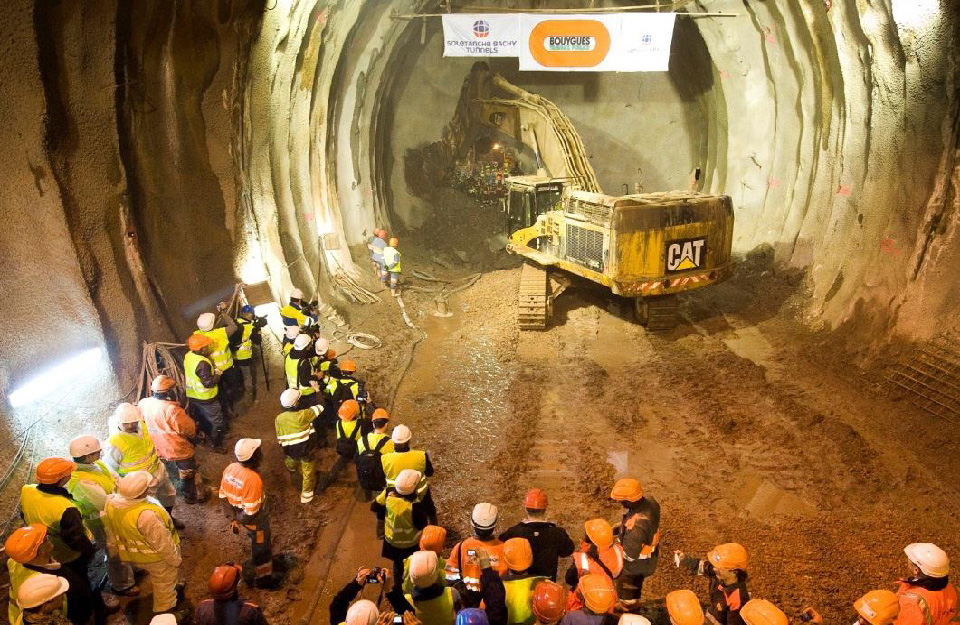

The tunnel linking the A50 and A57 motorways beneath the centre of Toulon is composed of two parallel tubes, each with two-traffic ways. The first tube went into service in September 2002. Construction of the second tube is almost finished.
Building beneath the city
The terrain beneath Toulon is a complex and sensitive geological environment. The tunnel traverses nine types of terrain, ranging from soft soils to hard rocks. traditional machine, more polyvalent, were used to bore through these varying terrains: a hydraulic rock breaker (a large pneumatic drill fixed to a mechanical digger) and a machine whose mobile arm has a milling head that fractures the rock with the combined effect of its teeth and the movement of the arm.

Front of waist showing 4 layers of different grounds

A suspended platform and a ground attack machine.
© Photothèque Bouygues TP / Photothèque traversée souterraine de Toulon
Emmanuel Gaffard / DR

© Photothèque Bouygues TP / Photothèque traversée souterraine de Toulon
Emmanuel Gaffard / DR
A few figures
Total length of the project: 3,310 metres (tunnel and access cuttings at both ends).
Tunnel length: 1,818 metres.
Height of the ground above the tunnel: ranging from 7 metres at each end to 40 metres.
337,000 cubic metres of terrain excavated.
230 kilometres of bolts.
1,400 steel hoops weighing 4,000 tonnes.
Automated platforms
To prevent surface subsidence and the cracks in buildings this causes, the tunnelling area had to be stabilised and reinforced. This was done in several stages as the tunnel bring progressed: installation of a temporary vault, bolting, spraying of concrete on the walls then installation of curved metallic beams. To prevent the tunnel face collapsing during excavation, fibreglass rods of several meters long were inserted into drill holes in the rock face. This procedure continued as the tunnel advanced.
The consolidation work was carried out on two custom-made platforms supported by automated machines with several arms. These mobile platforms facilitated access to the excavation area for the earth-moving machines removing the rubble. This mechanisation increased productivity and worker safety.